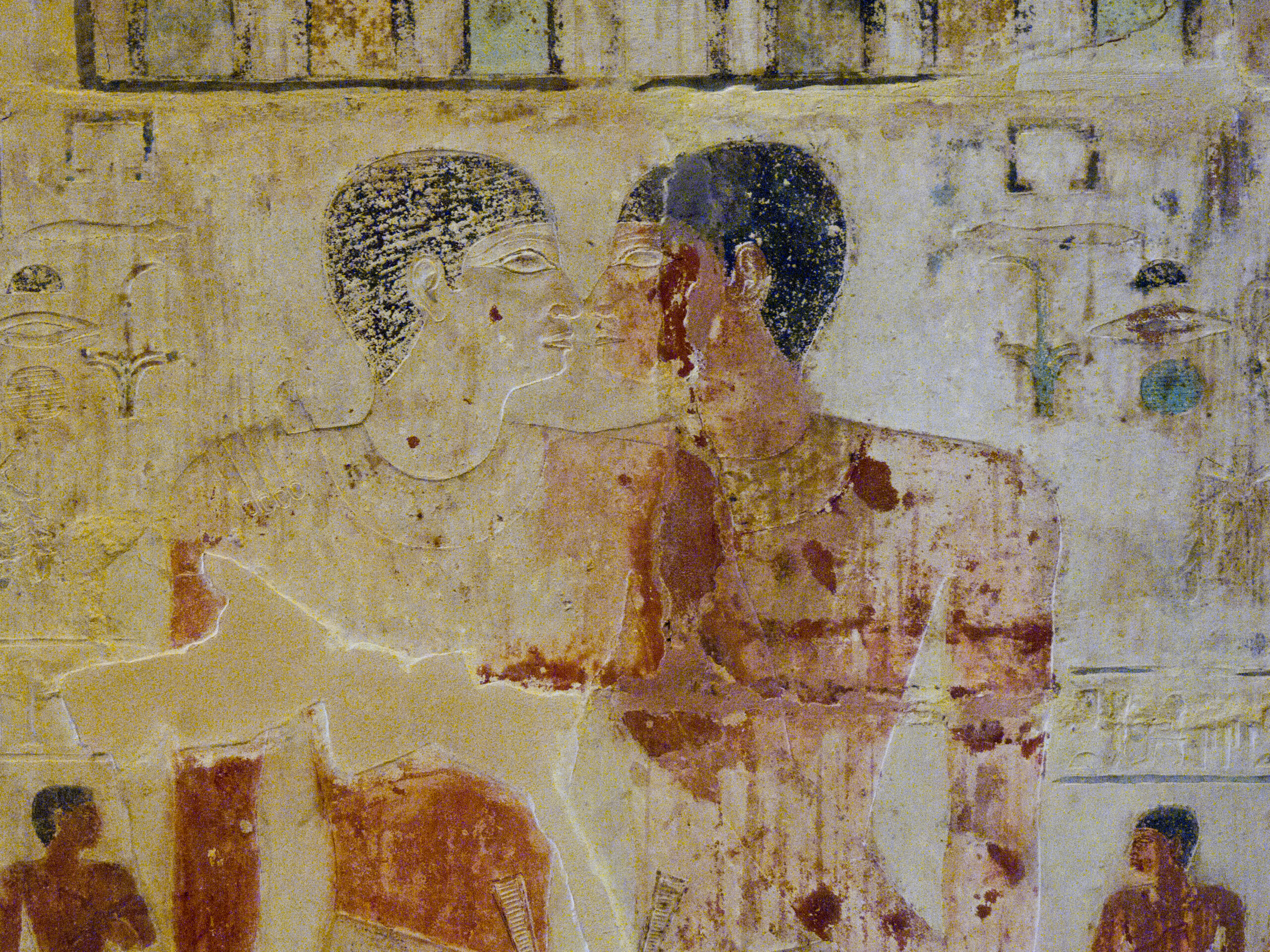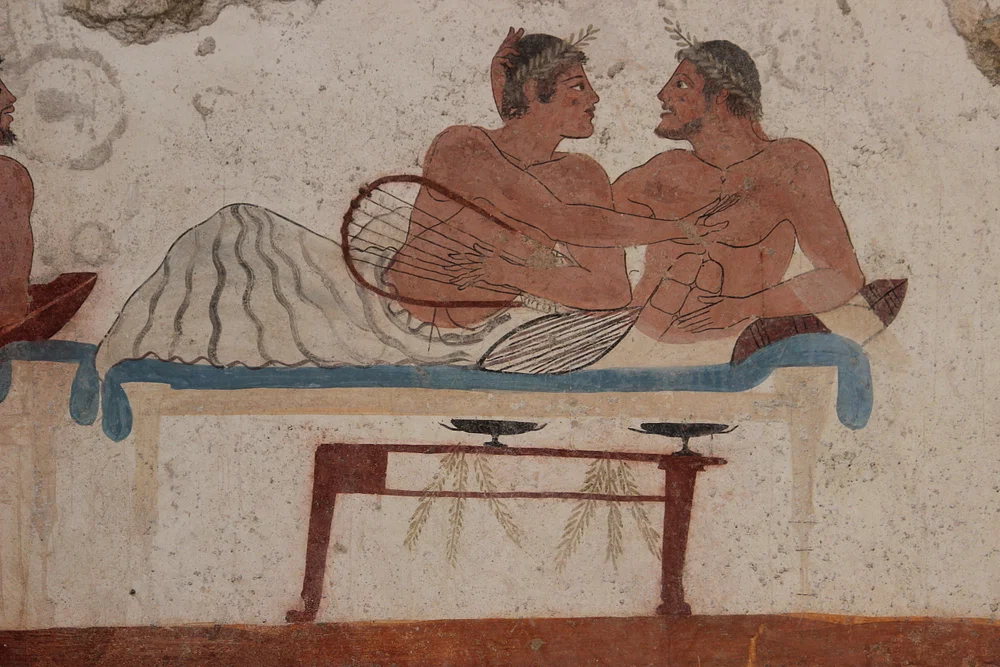Homosexuality and the Bible: What is at stake in the current debate
The sexual distinction between male and female is fundamental to what it means to be human. Humankind-in-fellowship as male and female is fundamental to what it means to be in the image of God.
Amid the vigorous debate over homosexuality and the Bible, it may be tempting for some to ask, “What is all the fuss about?” Isn’t it only a wrangling over a couple of passages in the obscure book of Leviticus and how they apply today? It doesn’t seem that important. Isn’t it only a matter of quibbling over definitions of marriage? What’s the big deal if we call these unions “marriage”? The question certainly demands a straightforward answer, so I would simply reply that there are fundamental biblical and theological issues at stake
What is at stake hermeneutically? The authority of Scripture and the sola Scriptura principle.
The Protestant Reformation, as well as the Advent movement, was founded upon the basic principle of sola Scriptura.1 “By Scripture alone” all issues of faith and practice are to be ultimately judged. “To the law and to the testimony; if they do not speak according to this word, there is no light in them” (Isaiah 8:20).2
For Bible-believing Christians, Scripture is the final norm for truth. It is the standard by which all doctrine and experience must be tested (see 2 Timothy 3:16-17; Psalm 119:105; Proverbs 30:5-6; Isaiah 8:20; John 17:17; 2 Thessalonians 3:14; Hebrews 4:12). Scripture provides the framework, the divine perspective, and the foundational principles for every branch of knowledge and experience. All additional knowledge and experience, or revelation, must build upon and remain faithful to the all-sufficient foundation of Scripture. All other authorities are to be subordinated to the supreme authority of God’s Word.
“Scripture Offers No Loopholes”
It is evident from the verses regarding homosexual practice and God’s Edenic model that Scripture gives a consistent and clear condemnation of homosexual practice. Not only is there univocal condemnation of homosexual practice throughout the Bible, but numerous lines of evidence connected to the Levitical legislation also point to the universal (transcultural) and permanent (transtemporal) nature of the prohibitions against homosexual activity.3 As Richard Hayes summarizes:
“The biblical witness against homosexual practices is univocal. … Scripture offers no loopholes or exception clauses that might allow for the acceptance of homosexual practices under some circumstances. Despite the efforts of some recent interpreters to explain away the evidence, the Bible remains unambiguous and univocal in its condemnation of homosexual conduct.”4 The witness of Scripture concerning homosexuality is not some obscure and minor point in the biblical corpus that might be dismissed as peripheral to the overarching concerns of the Bible. It rather forms part of the core values of Scripture. Robert Gagnon points out that among Scripture’s core values are values that are held:
The limitation of acceptable sexual intercourse to sexually-complementary partners and the strong abhorrence of same-sex intercourse is just such a value.5

Science or Scripture?
In the current debate, there are those who lean heavily upon the evidence of science, particularly the findings of the social sciences, arguing that many homosexuals are born with such tendencies and orientation, and that it is impossible for such people to change their orientation. Therefore, in light of science, the biblical position against homosexual practice is no longer tenable or relevant in modern-day society.
In response, we note that scientific studies, such as those presented by Mark Yarhouse6 give evidence that change in sexual orientation is sometimes possible, and even if the attraction or orientation does not change, a significant number of homosexuals move from practice to a position of chastity. But even if those studies were not forthcoming, the larger hermeneutical question remains: which authority gets the last word — science or Scripture?
Seventh-day Adventists believe that in the last days we will not be able to trust even our senses; we will have to depend totally upon God’s Word, even as miracles and counterfeits swirl around us. Do we truly believe in sola Scriptura — by Scripture alone all other authorities are to be tested?
Others in the current debate, coming from a postmodern perspective, cite their personal stories in their pilgrimage with homosexuality. They describe being delivered from fear and frustration to freedom as they embraced their homosexual orientation and moved to an active homosexual lifestyle. Personal experience becomes the norm by which we judge the appropriateness of a lifestyle issue.
Consider Eve at the tree of knowledge of good and evil in the Garden of Eden. God’s word was plain: do not eat of the tree. But the serpent lisped his insinuations to Eve to doubt: Did God really say not to eat of the tree? Don’t you know that He does not really mean what He says? He is trying to keep something good from you. Look at me, at my experience: I have eaten the fruit of the forbidden tree, and I can talk. Imagine what would happen to you if you ate. You would become like God. And the biblical record states: “When the woman saw that the tree was good for food, that it was pleasant to the eyes, and a tree desirable to make one wise, she took of its fruit and ate” (Genesis 3:6, NKJV). She trusted the empirical evidence, the personal experience, and the seemingly logical reasoning of the snake, rather than the Word of God, and the floodgates of woe were poured out upon the world.
The same issue is before us today with reference to the issue of homosexuality and the Bible. What is at stake? The sola Scriptura principle.
The Tota Scriptura Principle
It is not enough to affirm the final authority of Scripture. Those like Martin Luther, who called for sola Scriptura but failed to fully accept the Scriptures in their totality, have ended up with a “canon within the canon.” For Luther this meant depreciating the book of James as an “epistle of straw” and despising other portions of Scripture as presenting the way of law and not the gospel.
The self-testimony of Scripture is clear in 2 Timothy 3:16-17: “All scripture is inspired by God and profitable for teaching, for reproof, for correction, and for training in righteousness, that the man of God may be complete, equipped for every good work” (NIV). All Scripture — not just part — is inspired by God.
In the current debate, those who claim that one part of Scripture — for example, the passage that in Christ “there is neither male nor female” (Galatians 3:28, NASB) — is the key passage, or that one principle, such as love, is the overarching norm, in effect make this passage or principle a “canon within a canon,” in order to dismiss or totally ignore other evidence that is relevant to the issue. By dismissing and ignoring such evidence, the very concept of love is taken out of its scriptural context, and its meaning is distorted. Others in the debate explicitly set aside certain data as irrelevant or outmoded in terms of the current discussion. What is at stake here? The tota Scriptura principle — the totality of Scripture.
The Unity and Harmony of Scripture
A third foundational, biblically derived, hermeneutical principle that is at stake in this discussion is “the Analogy (or Harmony) of Scripture” (analogia Scripturae).
Since all Scripture is inspired by the same Spirit, and all of it is the Word of God, there is a fundamental unity and harmony among its various parts. The parts of Old Testament Scripture are considered by the New Testament writers as harmonious and of equal divine authority. New Testament writers may thus support their point by citing several Old Testament sources as of equal and harmonious weight. For example, in Romans 3:10-18 we have scriptural citations from Ecclesiastes (see 7:20), Psalms (see 14:2-3; 5:10; 140:4; 10:7; 36:2), and Isaiah (see 59:7-8).
Scripture is regarded as an inseparable, coherent whole. Because there is an underlying unity among the various parts of Scripture, one portion of Scripture interprets another, becoming the key for understanding related passages. Scripture is its own expositor. Or as Martin Luther put it, “Scripture is its own light.”
Jesus demonstrated this principle on the way to Emmaus when, “beginning with Moses and all the Prophets, he interpreted to them in all the Scriptures the things concerning himself” (Luke 24:27, ESV). Later that night in the upper room, Jesus pointed out “that everything written about me in the law of Moses and the prophets and the psalms must be fulfilled.” Then He opened their minds to understand the scriptures” (Luke 24:44, 45, ESV).

Scripture Cannot Be Set Against Scripture
Paul expresses this same principle in 1 Corinthians 2:13: “These things we also speak, not in words which man’s wisdom teaches but which the Holy Spirit teaches, comparing spiritual things with spiritual” (NKJV, emphasis added). This does not mean the indiscriminate stringing together of passages in “proof text” fashion without regard for the context of each text. But since the Scriptures ultimately have a single divine Author, it is crucial to gather all that is written on a particular topic in order to be able to consider all the contours of the topic.
Part of the analogy or harmony of Scripture is the principle of the consistency of Scripture. Jesus succinctly stated this principle: “The Scripture cannot be broken” (John 10:35, ESV). Since Scripture has a single divine Author, the various parts of Scripture are consistent with each other. Thus, Scripture cannot be set against Scripture. All the doctrines of the Bible will cohere with each other, and interpretations of individual passages will harmonize with the totality of what Scripture teaches on a given subject.
In contrast to this principle of the unity/harmony/consistency of Scripture, some proponents of the homosexual lifestyle and gay marriage claim that various individual passages of Scripture are contradicted by overarching principles, and these contradictory passages can now be set aside. Others claim that various passages of Scripture are not consistent or in harmony with each other on this issue, and therefore we need to move to the general principles of love or tolerance or equality to decide this issue. But even those who are not evangelicals have recognized that in the area of homosexual behavior, the Bible speaks univocally — with one voice — consistently condemning homosexual practice.
So, the basic principles of Evangelical Protestant hermeneutics are at stake: sola Scriptura, tota Scriptura, and the unity and harmony of Scripture that allows Scripture to be its own expositor. If we reject these Bible-based principles, then we are left at sea interpreting all the other doctrines of Scripture that depend upon a faithful application of these principles.
On the other hand, if we accept these principles of sola and tota Scriptura and the unity of Scripture, if Scripture becomes the final word to the homosexual, then Scripture becomes the way to peace and power.
What is at Stake Doctrinally?
Let us now look at some doctrines of Scripture that are at stake in this debate over homosexual behavior.
The Doctrine of Creation, particularly the doctrine of humanity as the imago dei.
In Genesis 1:26-27, “the high point and goal has been reached toward which all of God’s creativity from verse 1 on was directed.” Here in lofty grandeur is portrayed the creation of humankind (hd’addm) as the image of God: “Then God said, ‘Let us make humankind in our image, according to our likeness; and let them have dominion over the fish of the sea, and over the birds of the air, and over the cattle, and over all the wild animals of the earth, and over every creeping thing that creeps upon the earth.’ So God created humankind in his own image, in the image of God he created him; male and female he created them” (Genesis 1:26-27, NRSV).
The sexual distinction between male and female is fundamental to what it means to be human. Humankind-in-fellowship as male and female is fundamental to what it means to be in the image of God.7
As Karl Barth expresses it, “We cannot say man [humankind] without having to say male or female and also male and female. Man [humankind] exists in this differentiation, in this duality.”8 The mode of human existence in the divine image is that of male and female together. In Genesis 1, “heterosexuality is at once proclaimed to be the order of creation.”9 Certainly, homosexual practice strikes at the very roots of God’s Creation order for humans made in His image.
The rationale of the prohibitions in Leviticus 18 and 20 — including homosexual behavior — rests upon the foundational principles of Creation order in Genesis 1:27-28: the creation of all humanity in the image of God as “male and female,” unique and distinct from the rest of God’s creation, and the command to “be fruitful and multiply and fill the earth.” “These principles describe the order and structure of humanity in two relationships: to God and to society. All the laws of Leviticus 18 may be understood as violations of these principles.”10 The activities proscribed in Leviticus 18 and 20 are portrayed as “abominations” because homosexual practice violates the divine order of gender set forth in Genesis 1:27 and Genesis 2:24.11

Not An Issue of Gender Status
This connection with the creation order is implicit in the refrain of Leviticus 18:22 and 20:13: “with a male as one lies with a woman” (emphasis added).12 Such phraseology intertextually links with both Genesis 1:27 and 2:24. In Leviticus 18:22 and 20:13, homosexual activity is regarded as an abomination rejected primarily because it involved “behaving toward another man as if he were a woman by making him the object of male sexual desires. That is an abomination, an abhorrent violation of divinely-sanctioned boundaries — in this case, gender boundaries established at creation.”13 The prohibition of homosexual relations is not an issue of gender status (male honor or hierarchy), as some would claim, but concerns “a distortion of gender itself, as created and ordered by God.”14 B.S. Childs captures this biblical rationale and the implication for today:
A Distortion of Creation: An evolutionary premise
“The recent attempt of some theologians to find a biblical opening, if not warrant, for the practice of homosexuality stands in striking disharmony with the Old Testament’s understanding of the relation of male and female. The theological issue goes far beyond the citing of occasional texts which condemn the practice (Lev 20:13). … The Old Testament views homosexuality as a distortion of creation, which falls into the shadows outside the blessing.”15
Seventh-day Adventists have rightly defended the doctrine of Creation against attacks from those who would wish to deny the literal six-day Creation described in Genesis 1 and propose some form of theistic evolution for the earth’s origins. But a rejection or undermining of the basic distinctions in the Creation order is just as devastating an attack on the doctrine of Creation — perhaps more so.
In fact, the view that homosexual orientation is congenital and therefore natural is built upon an evolutionary premise: namely, that we are simply living out the urges that we naturally have as a result of natural selection, time, and chance. Thus, the argument for the naturalness of homosexual orientation actually supports the doctrine of evolution and denigrates, if not implicitly rejects, the doctrine of Creation as described in Genesis 1 and 2, in which humans are created in the image of God, and heterosexuality is the divine mandate for humanity. So, at stake are both the doctrine of Creation as a whole and humankind’s creation in the image of God in particular.
The Theology of Marriage and Family
Related to the doctrine of Creation is the theology of marriage since human sexuality according to the Edenic divine paradigm finds expression in a heterosexual marital form. Genesis 2:24 presents a succinct theology of marriage: Therefore a man leaves his father and his mother and cleaves to his wife, and they become one flesh” (RSV).16
The introductory “therefore” [cal-ken] indicates that the relationship of Adam and Eve is upheld as the pattern for all future human sexual relationships.17 The reference to “a man … and … his wife” — literally, a “man and his woman”—indicates a heterosexual marriage relationship of a man and woman as the Edenic model for all time. This Creation pattern of heterosexual relationship remained the norm throughout the canonical Old Testament Scriptures.
Only two institutions have come down to us from the Garden of Eden: the Sabbath and marriage. It is not surprising that in the last days both of these divine institutions, these divine gifts to humanity from the Creator’s hand, are under attack.
God Himself officiated at the solemn covenant-making ceremony in Eden (the first garden wedding). God Himself designed, and defined, marriage. What God has defined, no one has the right to redefine. At stake in the debate over same-sex marriage is the integrity of the institution of marriage as God designed.
The Doctrines of the Fall and Sin
Those who suggest that the homosexual lifestyle is natural and thus unavoidable — and even to be welcomed and celebrated — have not taken into account the biblical doctrine of the Fall. At the time of the Fall, Adam and Eve’s natures were corrupted, turned inward in selfishness, depraved. Since that time, we are all born with depraved human natures. We naturally incline toward sin. Whether a man looks lustfully after a woman not his wife, or after another man, it can be said to be natural. But simply because it is natural does not make it right. The Bible makes clear that harboring lustful thoughts, let alone acting out our lustful fantasies in illicit sexual activity, whether heterosexual or homosexual, is sin.18

Here I want to underscore the difference between homosexuality as an orientation (propensity, inclination, condition, disposition) and homosexual practice. The Old Testament condemns homosexual practice and the harboring of homosexual lustful thoughts and temptations. Homosexuality as a condition is clearly a sexual disorder, a distortion of the Edenic ideal, but I find in Scripture no culpability for homosexual orientation per se, just as there is no condemnation of natural fallen tendencies and temptations to heterosexual lust, if these are not harbored or acted upon.19
But now consider homosexual practice itself: same-sex intercourse. How much is at stake in the issue of same-sex intercourse may be judged by how seriously it is regarded in God’s eyes.
Gagnon makes a strong case that, according to God’s Word, “homosexual practice is a more serious violation of Scripture’s sexual norms than even incest, adultery, plural marriage, and divorce.”20 Only bestiality is presented as a worse sexual offense.
“In the Old Testament there is a clear ranking of sins. For instance, when one goes to Leviticus 20, which reorders the sexual offenses in Leviticus 18 according to penalty, the most severe offenses are grouped first, including same-sex intercourse. Of course, variegated penalties for different sins can be found throughout the legal material in the Old Testament.”21
Jesus also prioritized offenses, referring to “weightier matters of the law” (Matthew 23:23, NKJV) and to different degrees of punishment for different offenses (see Luke 12:48). Paul’s attitude toward the case of incest in 1 Corinthians 5 also makes clear that he differentiated among various sexual offenses, with some being more serious than others.
A Grave Sexual Sin
Having established that Scripture does consider some offenses more serious than others, Gagnon then gives three main reasons as to why same-sex intercourse is one of the gravest sexual sins:
Gagnon rightly concludes that “same-sex intercourse is a high offense in the sexual realm toward God.”23 What is at stake in the debate over homosexuality is the biblical doctrine of sin. Are we willing to take homosexual practice as seriously as God takes it?
At the same time, although in God’s estimation homosexual practice is placed near the top of sexual sins in seriousness, we should remember that from God’s perspective such sins as “pride of heart” (Proverbs 16:5) and “lying lips” (Proverbs 12:22) and “idolatry” (Deuteronomy 17:3, 4) and “dishonest scales” (Proverbs 11:1) are castigated just as strongly by God as “abominations” (using the same Hebrew word to’eba), although there is no effective mechanism to punish such sins until the final judgment. All of us are sinners, in need of the grace of God. And all sins, even those most strongly condemned by God, can be forgiven by Him.
The Doctrine of Grace
The biblical view of grace must be seen against the backdrop of sin. According to Paul, “where sin abounded, grace abounded much more” (Romans 5:20, NKJV). Unless we recognize our sinfulness, we are not prepared to appreciate God’s grace. If homosexual practice is not considered a sin, or not regarded as a serious sin, then grace is not needed. Only when God’s estimation of homosexual practice is taken seriously as a grave sin is it possible to respond properly to God’s grace.
Throughout the Bible, the picture is clear that God unequivocally upholds the Creation duality between the sexes (see Genesis 1:26) and the heterosexual norm for marriage (see Genesis 2:24). Divine judgment is pronounced against those who engage in homosexual practice.
God’s amazing grace is revealed in His willingness to forgive and provide empowering grace for obedience. In view of God’s grace extended toward all sinners, including homosexuals, and in view of the sinful desires that lurk in all our hearts, expression of disapproval of homosexual practice must be made “in the context of our own sexual fallenness.”24 We must all recognize our need of grace and healing in matters of our sexuality, including especially the heterosexual sin of hatred toward homosexuals. At stake in the discussion over homosexuality and gay marriage is a proper recognition of God’s grace within the context of human sinfulness.
The Doctrine of the Church
It is the duty of the church to relate to homosexual practice in a responsible way, in harmony with the principles of Scripture. The Seventh-day Adventist official statement on homosexuality expresses this concern well:
“Seventh-day Adventists endeavor to follow the instruction and example of Jesus. He affirmed the dignity of all human beings and reached out compassionately to persons and families suffering the consequences of sin. He offered caring ministry and words of solace to struggling people, while differentiating His love for sinners from His clear teaching about sinful practices.”25
We have a long way to go toward providing the needed psychological and spiritual care for those struggling with homosexuality. How much we need to learn to follow the example of the Messianic Servant: “A bruised reed He will not break, and a smoking flax He will not quench” (Isaiah 42:3). How far we still need to go to provide an accepting and loving church family for those homosexuals who have chosen by God’s grace to follow a celibate lifestyle. We must show unconditional love for homosexuals, while at the same time assisting those active in the lifestyle to move from brokenness into healing and chastity by the power of God. At stake is nothing less than the doctrine of the church and her mission.

The Gospel in the Setting of the Three Angels’ Messages
For Seventh-day Adventists, who see their specific mission to proclaim the three angels’ messages of Revelation 14, the issue at stake in homosexuality takes on an eschatological/apocalyptic perspective. The first angel has “the everlasting gospel to preach to those who dwell on the earth.” Adventists have rightly emphasized the reference to the investigative judgment: “Fear God and give glory to Him, for the hour of His judgment has come.” We have rightly seen the quotation from the Sabbath commandment in the next phrase: “and worship Him who made heaven and earth, the sea, and the fountains of waters.”
We have recognized the mission of the Adventist Church as repairers of the breach (see Isaiah 58:12) in God’s law, especially with regard to the seventh-day Sabbath (see Isaiah 58:13, 14). But the call of the third angel for the “endurance of the saints … those who keep the commandments of God” (Revelation 14:12) includes all the commandments of God, not just the fourth.
Some have proposed that the three angels’ messages concern both the Sabbath and marriage:26 the references to sexual immorality in the second angel’s message, allusions to the “image of the beast” as a counterfeit of the image of God in Genesis 1, and the reference to “fire and brimstone” as an allusion to the destruction of Sodom for its sins, particularly its practice of “sodomy.”
In the introduction to the three angels’ messages, Revelation 14:4 describes God’s special people as a chaste people. In Revelation 19 we find reference to “the marriage of the Lamb” in which “His wife has made herself ready” (Revelation 19:7-8). Although the metaphors of marriage and immorality are applied in a spiritual sense to doctrinal purity, the very use of such a metaphor also implies the sexual purity of God’s people. Elsewhere in Revelation is a special call for believers living in the end times to be pure, with numerous references to sexual immorality as especially displeasing to God (see Revelation 2:14, 20-21; 9:21) and even disqualifying worshipers from entering the New Jerusalem (see Revelation 22:15).
In the eschatological context of Revelation, it is not surprising to have an emphasis upon creation, the Sabbath, and marriage/family, and to indicate that all of these will come under attack in the last days. According to Revelation, the final remnant will keep “the commandments of God” (12:17; 14:12), including the fourth, the seventh, and the fifth.
So, what is at stake is no less than the call to be faithful to the commandments of God, in light of the Gospels and the three angels’ messages. All of us are called to be faithful to God, with regard to both the day and way of worship, and the fundamental structures of marriage and family as given by God in Creation.

The Great Controversy Worldview and the Character of God
Finally, the book of Revelation also brings us to the issue of the larger worldview of Scripture. Revelation reiterates what was already present in the beginning of Scripture, in Genesis 1 to 3, with a description of the great controversy centered on the issue of the character of God. In Genesis 3, the serpent casts doubts upon the character of God, and the great moral conflict, begun in heaven with the rebellion of Lucifer, is brought to this earth. Job 1 and 2 reveals that the moral conflict is cosmic, yet it springs from the same basic issue of whether or not we will trust God’s character and His Word. In the last three chapters of Revelation, we have the windup of the great controversy, and the final triumphant shout of the universe as God’s char-acter is vindicated in His dealing with sin: “true and righteous are His judgments” (Revelation 19:2; cf. the song of Moses and the Lamb in 15:3: “Just and true are Your ways, O King of saints!”).27
The homosexuality debate is part of the great controversy worldview. It is a symptom of the clash of two worldviews, the biblical versus the humanistic. The reasoning of the gay activist community, and even of many not part of that community, utilizes (whether knowingly or not) the perspective of the humanistic, evolutionary worldview. It is so easy to imbibe the spirit of the culture without even being aware of it and to adopt elements of the secular worldview in these issues. At stake is the biblical worldview that stands against the modern culture in so many ways.
At the heart of the great controversy is the issue of the character of God. No one knows this better than those believers who struggle with same-sex attraction. Religious people who face up to their homosexual orientation often get angry with God for allowing them to have such an orientation and (too often) for not seeming to be willing or able to help them overcome such an orientation. How many of those who are practicing homosexuals were once very religious but have turned away from religion because of what they perceived to be the untrustworthy character of God?
And on the other side, how many heterosexuals implicitly cast aspersions upon the character of God by their failure to love homosexuals? They distort God’s character as they treat homosexuals in a manner that does not model God’s love and compassion. God’s character can be distorted by falling into either ditch, either upholding His justice at the expense of His mercy, by hating and rejecting the homosexual, or by upholding His grace at the expense of His justice, by tolerating or even affirming homosexual practice.
God calls for us to model in our individual lives, as well as in the church, both His justice and mercy. He is looking for a people who will present to the world, in word and in deed, a living exhibition of the character of God.
Conclusion
Ultimately, what is at stake in the current debate over homosexual behavior and the Bible is more than abstract hermeneutical principles or doctrines, but the lives of real people. Consider those who struggle with their homosexual tendencies but have found power in the grace of God to live above those tendencies.
For myself, what has been at stake is my own heart. I have realized that my own treatment of homosexuals, whom I ridiculed as “queers” while in high school, and whom I generally mocked for their mannerisms while in college, was once flawed. I have had to confess my own falling short when it comes to the call to treat homosexuals with respect and love. I have had to revisit the painful reality that one of my close friends in college, with whom I joked about homosexuals, struggled with his own homosexual tendencies. I even once sent him a letter of rebuke for activities which I interpreted as his indulging his sexual passions but which I now realize were his attempts to project a heterosexual identity.
My friend recently shared with me his testimony — and his forgiveness. I wept to learn how he had desperately sought help for his brokenness as a teenager but was repeatedly rebuffed or even taken advantage of by those he thought he could trust. But I also rejoiced as he described his recovery, healing, and blessing — how God has freed him from the devil’s counterfeit sexuality and how returning to God’s plan has not been easy, but worth it.
What is ultimately at stake in this debate? The lives of men and women like my friend. May God help us to be a community of believers who welcome them into our midst and who minister God’s grace and healing in their lives, while allowing that same grace to heal our own brokenness and insensitivity.28
—By Richard Davidson, Ph.D., J.N. Andrews Professor of Old Testament Interpretation, Andrews University, Berrien Springs, Michigan
This article, slightly abridged, is a chapter from Homosexuality, Marriage, and the Church, edited by Roy E. Ganes, Nicholas P. Miller, and H. Peter Swanson (Berrien Springs, Michigan: Andrews University Press, 2012). Used by permission. It was first published as an article, “Homosexuality and the Bible: What is at stake in the current debate,” in Dialogue 24:2 (2012): 5-11, 15. Used by permission.
- 1. For further discussion and biblical grounding of this and other foundational hermeneutical principles discussed in this first section, see Richard M. Davidson, “Biblical Interpretation,” in Handbook of Seventh-day Adventist Theology, Commentary Reference Series, vol. 12, ed. Raoul Dederen (Hagerstown, Maryland: Review and Herald, 2000), pp. 60-68. ↩︎
- 2. All Scripture verses, unless otherwise noted, are taken from the authorized King James Version. ↩︎
- 3.See Richard M. Davidson, “Homosexuality in the Old Testament” in Homosexuality, Marriage and the Church, eds. Roy E. Gane, et al (Berrien Springs, Michigan: Andrews University Press, 2012). ↩︎
- 4. Richard B. Hayes, “The Biblical Witness Concerning Homosexuality,” in Staying the Course: Supporting the Church’s Position on Homosexuality, ed. Maxie D. Dunnam and H. Newton Malony (Nashville, Tennessee: Abingdon, 2003), pp. 73, 78. Cf. Hayes, “Awaiting the Redemption of Our Bodies: The Witness of Scripture Concerning Homosexuality,” in Homosexuality in the Church: Both Sides of the Debate, ed. Jeffrey S. Siker (Louisville, Kentucky: Westminster John Knox, 1994), pp. 3-17. ↩︎
- 5. Robert A.J. Gagnon, “The Authority of Scripture in the ‘Homosex’ Debate,” http://robgagnon.net/homoAuthorityScripture.htm, accessed October 13, 2009. ↩︎
- 6. See Mark Yarhouse, “The pastoral applications of a three-tier distinction between same-sex attractions, homosexual orientation, and a gay identity” in Homosexuality, Marriage and the Church, ed. R. E. Gane, et al (Berrien Springs, Michigan: Andrews University Press, 2013). ↩︎
- 7. Gerhard von Rad, Genesis: A Commentary, trans. John H. Marks, OTL (Philadelphia: Westminster, 1961), p. 57. ↩︎
- 8. Karl Barth’s discussion of this point extends through major portions of his The Doctrine of Creation, vol. 3 of Church Dogmatics, eds. G.W. Bromiley and T.F. Torrance; trans. J.W. Edwards et al., 5 vols, in p. 13 (Edinburgh: T & T Clark, 1958). See the helpful summary of his argument in Paul K. Jewett, Man as Male and Female: A Study of Sexual Relationships from a Theological Point of View (Grand Rapids: Eerdmans, 1975), pp. 33-48. ↩︎
- 9. Barth, vol. 3, bk. 2, p. 236. ↩︎
- 10. Samuel H. Dresner, “Homosexuality and the Order of Creation.” Judaism 40 (1991): p. 309. ↩︎
- 11. Donald J. Wold, Out of Order: Homosexuality in the Bible and the Ancient Near East (Grand Rapids: Baker, 1998), p. 130. See Robert A.J. Gagnon, The Bible and Homosexual Practice: Texts and Hermeneutics (Nashville, Tennessee: Abingdon, 2001), p. 136: “All the laws in Lev. 18:6-23; 20:2-21 legislate against forms of sexual behavior that disrupt the created order set into motion by the God of Israel.” ↩︎
- 12. For further elaboration of this principle, see Dresner, pp. 309-321. ↩︎
- 13. JPS (Jewish Publication Society), Tanakh translation (1985,1999). ↩︎
- 14. Gagnon, pp. 135-136. Cf. David T. Stewart, “Ancient Sexual Laws: Text and Intertext of the Biblical Holiness Code and Hittite Laws” (Ph.D. dissertation, University of California, Berkeley, 2000), p. 378, who concludes regarding all the laws of Leviticus 18: “All these possible sexual violations hark back to the beginning, to the era when God set in motion the ongoing re-creation of humankind.” ↩︎
- 15. Gagnon, p. 142. ↩︎
- 16. B.S. Childs, Old Testament Theology in a Canonical Context (Philadelphia: Fortress, 1985), p. 194. ↩︎
- 17. See discussion in Richard M. Davidson, Flame of Yahweh: Sexuality in the Old Testament (Peabody, Massachusetts: Hendrickson Press, 2007), pp. 43-48. ↩︎
- 18. See Robert B. Lawton, “Genesis 2:24: Trite or Tragic?” Journal of Biblica Literature 105 (1986): pp. 97-98, for evidence that this is not just an etiological insertion to explain the common legal custom. The verse expresses “a description of divine intention rather than of habitually observed fact” (p. 98). See also Deborah F. Sawyer, God, Gender and the Bible (London: Routledge, 2002), p. 24: “The first couple provide the blueprint for normative citizenship in the theocracy proposed in the Bible’s first story.” ↩︎
- 19. See especially Job 31:1; Proverbs 6:25; Ezekiel 23:11; Matthew 5:28; Romans 1:27; 13:13; 1 Corinthians 10:6; Galatians 5:16; 1 Thessalonians 4:5; 1 Peter 1:4; 2:10; and 1 John 2:16-17. ↩︎
- 20. As I have argued in the essay referenced in endnote 3 above: “But just as some people quit smoking and never again have the urge to smoke, while others quit smoking yet battle the urge all their lives, so some homosexuals have a miraculous change of orientation, while others may have to battle homosexual tendencies all their lives. The culpability is not in the tendencies, but in the acting upon (either in imagination or actual practice) those tendencies.” For those heterosexuals who insist that homosexuals must have changed their orientation before their status is acceptable before God, I simply ask if they themselves can honestly say they no longer experience heterosexual temptation. We all are fallen sexual creatures, whether we are tempted by heterosexual or homosexual lust. ↩︎
- 21. Robert A.J. Gagnon, “How Bad Is Homosexual Practice According to Scripture and Does Scripture’s Indictment Apply to Committed Homosexual Unions?” www.robgagnon.net/OnlineArticles, accessed January 2007, p. 12. ↩︎
- 22. Ibid., p. 13. ↩︎
- 23. Ibid., p. 15. ↩︎
- 24. Gagnon, “How Bad Is Homosexual Practice?”. ↩︎
- 25. Thomas E. Schmidt, Straight and Narrow? Compassion and Clarity in the Homosexuality Debate (Downers Grove, Illinois: InterVarsity, 1995), p. 172. ↩︎
- 26. “Seventh-day Adventist Position Statement on Homosexuality,” voted at the Annual Council on October 3, 1999, www.adventist.org/beliefs/statements. ↩︎
- 27. Nicholas Miller, attorney and professor of church history at the Seventh-day Adventist Theological Seminary, has made the argument in a paper titled “Why should Adventists care about protecting traditional marriage?” ↩︎
- 28. For discussion of this larger biblical worldview, as set forth in the introduction and conclusion to Scripture, see Richard M. Davidson, “Back to the Beginning: Genesis 1-3 and the Theological Center of Scripture,” in Christ, Salvation, and the Eschaton, ed. Daniel Heinz, Jiri Moskala, and Peter M. van Bemmelen (Berrien Springs, Michigan: Old Testament Publications, 2009), pp. 5-29. ↩︎
Images: AI-generated, Getty
Related Articles
-

Homosexuality and the Bible: What is at stake in the current debate
-

Homosexuality in the Old Testament
-

Homosexuality in the New Testament
-

What Adventists Believe About the Holy Scriptures
-

God’s Ideal for Marriage: Listening to Scripture’s clear voice
-

Homosexuality in History—Leviticus 18:22
-

Homosexuality in Romans 1:26-27
-

What the Bible Really Says About LGBTQ+
-

He Made All Things Beautiful: Sexuality and Christian Lifestyle